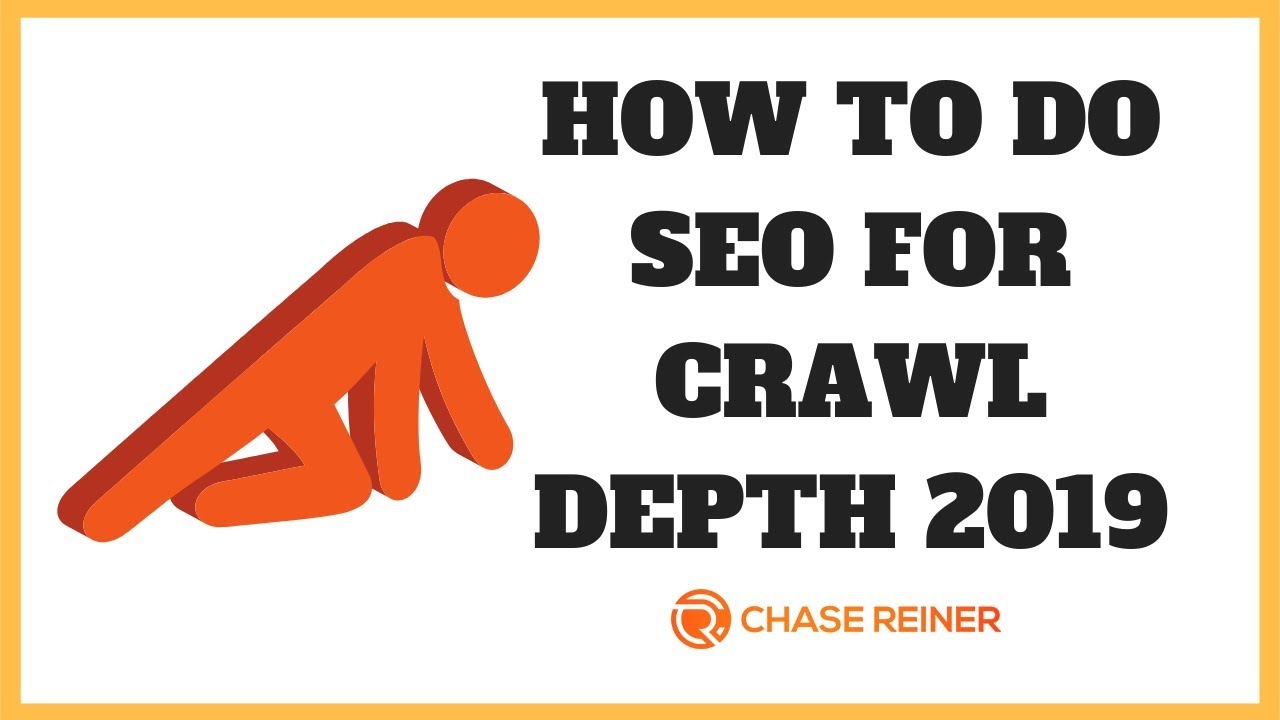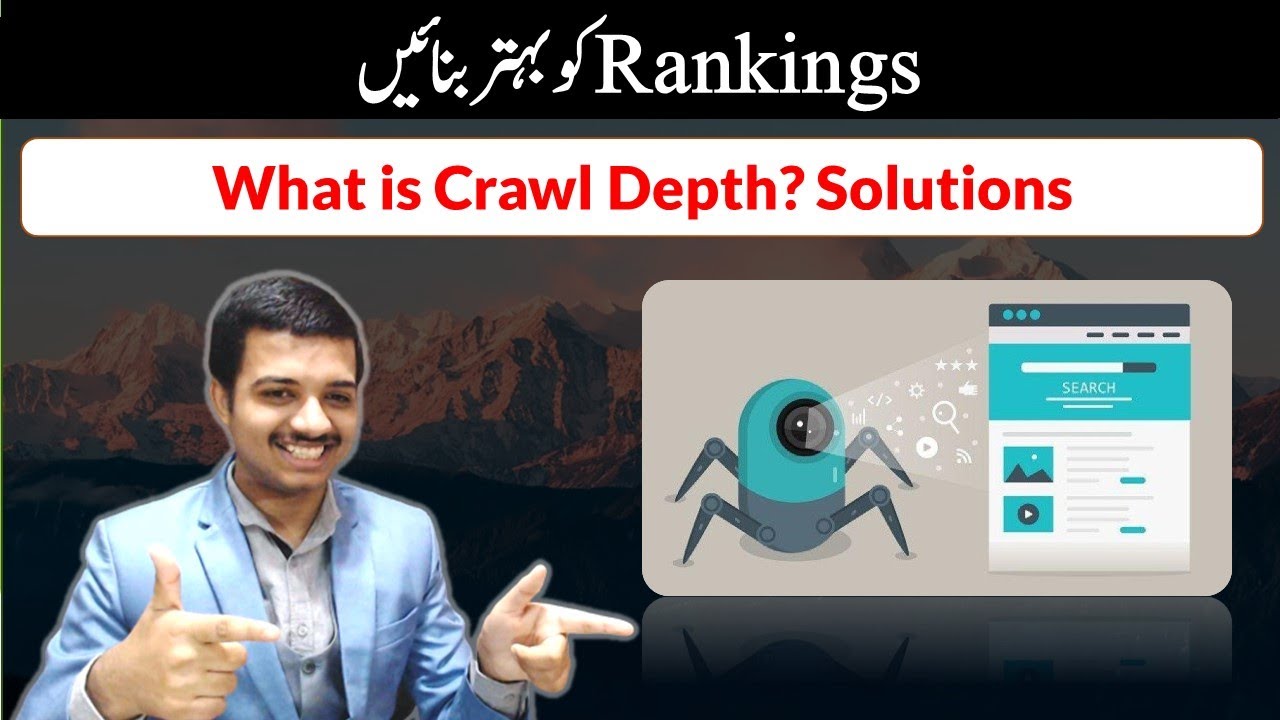In the vast and intricate realm of the internet, search engines serve as the gatekeepers of information, tirelessly scouring websites to discover, index, and rank their pages. As search enginecrawlers delve into the depths of websites, understanding the concept of "crawl depth" becomes essential. In this article, we unravel the significance of crawl depth and explore strategies to optimize it, ultimately enhancing the indexation and visibility of web pages.
What Is Crawl Depth?

What is Crawl Depth
Crawl depth refers to the level or distance at which a web page is located within a website's structure, measured by the number of clicks or navigation steps required to reach that page from the website's homepage. It determines how far search engine crawlers explore a website's contentduring the process of indexing and ranking pages.
The crawl depth of a page influences its visibility, indexation, and potential ranking in search engine results. Pages with shallow crawl depth, closer to the homepage, are generally considered more important and receive more attention from search engine crawlers.
Importance Of Crawl Depth In SEO

Daily SEO Fix: Analyze Crawl Depth of Important Pages
Crawl depth holds significant importance in SEO(Search Engine Optimization) due to its impact on various aspects of a website's visibility, indexation, and search engine rankings. Here are some key reasons why crawl depth matters in SEO:
- Indexation and Visibility -Search engines use crawlers to discover and index web pages. Shallow crawl depth ensures that important pages are easily accessible and more likely to be discovered by search engine crawlers. When pages have a deeper crawl depth, they may receive less attention and may even remain unindexed, resulting in limited visibility in search results.
- Page Ranking and Authority -Search engines often assign higher authority and ranking to pages that are closer to the website's homepage. Pages with shallow crawl depth are typically considered more significant and may have a better chance of ranking higher in search results. Optimizing crawl depth can help improve the perceived importance and authority of pages within a website.
- User Experience-Crawl depth has implications for user experience. Websites with a well-structured and logical hierarchymake it easier for users to navigate and find relevant information. By keeping important pages within a few clicks from the homepage, users can access desired content quickly, enhancing their overall experience and reducing bounce rates.
- Internal Link Equity Distribution -Internal linking plays a crucial role in distributing link equity throughout a website. By strategically linking important pages from the homepage or high-level pages, the link equity flows more effectively, helping search engines understand the significance of those pages. Shallow crawl depth ensures that link equity is distributed to key pages, potentially boosting their ranking potential.
- Crawl BudgetOptimization -Search engines allocate a limited crawl budget to each website, indicating the maximum number of pages they will crawl during a given timeframe. Optimizing crawl depth helps ensure that search engine crawlers spend their allocated crawl budget on important and relevant pages rather than getting lost in the depths of a website's structure. This maximizes the efficiency and effectiveness of the crawl process.
How To Influence Crawl Depth?
Influencing crawl depth involves implementing strategies that guide search engine crawlers to prioritize important pages and ensure optimal indexation. Here are some effective ways to influence crawl depth:
- Internal Linking -Implement strategic internal linking throughout your website. Place contextual linkswithin your content to guide crawlers from high-level pages, such as the homepage or category pages, to important pages with deeper depth. Ensure that important pages receive sufficient internal links to increase their visibility and crawl ability.
- Website Hierarchy -Structure your website in a logical and organized hierarchy. Place important pages closer to the homepage, ideally within a few clicks. Categorize and group related content together to create a clear and intuitive structure. This helps search engine crawlers understand the importance of each page and prioritize crawling accordingly.
- XML Sitemap Optimization -Create an XML sitemap that includes all important pages on your website. Submit the sitemap to search engines to provide them with a roadmap of your website's structure. Ensure that the sitemap is regularly updated to reflect any changes or additions to your website's content.
- Canonicalization -Implement canonical tags to consolidate duplicate or similar content under a single preferred URL. This helps search engines understand the canonical version of each page and prevents dilution of crawl depth caused by multiple versions of the same content.
- Optimized URL Structure -Maintain clean and optimized URLs that reflect the hierarchy of your website. Use descriptive and keyword-rich URLs that are easy for search engine crawlers to understand. Avoid using complex query parameters or dynamically generated URLs that can confuse crawlers and lead to deeper crawl depth.
- Monitor Crawl Errors -Regularly monitor and fix any crawl errors or broken links on your website. Crawl errors can hinder crawlers from reaching important pages and result in deeper crawl depth. Use tools like Google Search Consoleto identify and address these issues promptly.
- Page Speed Optimization -Improve the loading speed of your web pages. Slow-loading pages may discourage search engine crawlers from fully exploring your website, leading to incomplete indexation and deeper crawl depth. Optimize your website's performance by compressing images, minimizing CSS and JavaScript files, and utilizing caching techniques.
- Fresh and Updated Content -Regularly add new, high-quality content to your website. Fresh content attracts search engine crawlers and encourages them to revisit your website more frequently. This helps ensure that important pages are crawled and indexed promptly, reducing crawl depth.
How Can I Check The Crawl Depth Of My Website?
Checking the crawl depth of your website involves analyzing the navigation path or the number of clicks required to reach different pages from the homepage. While it's not possible to get an exact crawl depth value directly from search engines, you can still assess it through various methods. Here are a few approaches to checking the crawl depth of your website:
- Manual Navigation -Manually navigate through your website from the homepage to specific pages, noting the number of clicks required to reach each page. This method gives you a general idea of the crawl depth for individual pages.
- Crawl Visualization Tools -There are several crawling tools available that provide visual representations of your website's structure and crawl paths. These tools crawl your website and generate interactive maps or diagrams that display the hierarchy and connections between pages. By examining these visualizations, you can gauge the crawl depth of different pages.
- Crawl Reports in SEOTools- SEO tools like Screaming Frog, DeepCrawl, or Sitebulb provide detailed crawl reports that include information about the crawl depth of your website's pages. These reports indicate how many clicks away each page is from the homepage or other high-level pages. Analyzing these reports can help you understand the crawl depth distribution across your website.
- Google Search Console -While Google Search Console does not explicitly provide crawl depth information, it offers insights into how Google crawls and indexes your website. Use the "Coverage" report to identify pages that are indexed or have crawl issues. This can indirectly indicate the crawl depth of different pages based on their indexation status.
- Crawl Depth Analysis Tools -There are specialized tools available that focus on analyzing crawl depth. These tools crawl your website and provide specific metrics related to crawling depth, such as the average depth of crawled pages or the distribution of pages across different depths. Some SEO tools may also offer crawl depth analysis as part of their feature set.
Improve And Optimize Your Crawl Depth

How To Do SEO For Crawl Depth 2019
Improving and optimizing your crawl depth is crucial for enhancing the indexation, visibility, and overall SEO performance of your website. Here are some effective strategies to help you achieve this:
- Sitemap Optimization -Create an XML sitemap that includes all important pages on your website. Submit the sitemap to search engines to provide them with a clear roadmap of your website's structure. This helps search engine crawlers easily discover and index your pages.
- Internal Linking -Implement a well-designed internal linking structure throughout your website. Include relevant and contextual links within your content that lead to important pages. This distributes link equity, guides search engine crawlers, and ensures that deep pages receive sufficient attention.
- Hierarchy and Site Structure -Organize your website's content in a logical and hierarchical manner. Place high-priority and important pages closer to the homepage. This reduces the number of clicks required to reach them and increases their visibility to search engine crawlers.
- Canonicalization and URL Structure -Utilize canonical tags to consolidate duplicate or similar content under a single preferred URL. This prevents search engines from indexing redundant pages, which can dilute crawl depth. Maintain clean and structured URLs that reflect the hierarchy of your website, making it easier for both crawlers and users to navigate.
- Avoid Infinite Crawling -Ensure that your website structure does not have infinite loops or redundant redirects. These issues can lead to search engine crawlers getting trapped in an endless crawl cycle, wasting their resources and impacting crawl depth negatively. Regularly monitor and fix any crawl errors or broken links to maintain a healthy crawl.
- Monitor Crawl Depth Metrics -Utilize SEO tools like Google Search Console, Bing Webmaster Tools, or third-party software to monitor and analyze crawl depth metrics. Keep an eye on the average depth of crawled pages, identify pages with unfavorable crawl depth, and troubleshoot any issues that may hinder indexation or visibility.
- Regularly Update and Refresh Content - Keep your website's content fresh and up to date. Regularly add new pages, update existing ones, and remove outdated or irrelevant content. This encourages search engine crawlers to revisit your website frequently, ensuring that new and important pages are crawled and indexed promptly.
By implementing these optimization strategies, you can enhance your website's crawl depth, increase indexation of important pages, improve visibility in search results, and ultimately boost your overall SEO performance.
Monitoring And Analysis
Monitoring and analysis are essential aspects of managing crawl depth and optimizing your website's SEO performance. Here are some key considerations for monitoring and analyzing your website's crawl depth:
- SEO Tools -Utilize reputable SEO tools such as Google Search Console, Bing Webmaster Tools, or third-party software to monitor and gather data related to crawl depth. These tools provide valuable insights into how search engine crawlers interact with your website, including the depth at which pages are crawled.
- Crawl Reports -Regularly review crawl reports provided by SEO tools or crawling software. These reports offer detailed information about which pages were crawled, their crawl depth, and any crawl errors encountered. Analyzing these reports can help identify patterns, anomalies, and potential crawl depth issues.
- Crawl Depth Metrics -Pay attention to crawl depth metrics such as the average depth of crawled pages, the distribution of pages across different crawl depths, and the ratio of shallow to deep pages. These metrics can indicate the overall crawl ability and accessibility of your website's content.
- Crawl Frequency -Monitor how frequently search engine crawlers revisit your website and crawl its pages. This can provide insights into how quickly new or updated content is being discovered and indexed. If certain important pages are not being crawled frequently, it may indicate a crawl depth or indexing issue.
- Indexation Status -Keep track of the indexation status of your web pages. Monitor the number of indexed pages over time and compare it to the total number of pages on your website. If a significant portion of your website's pages remains unindexed or has a high crawl depth, it may require further investigation and optimization.
- Crawl Budget Analysis -Understand how search engine crawlers allocate their crawl budget to your website. Monitor crawl budget usage and identify any patterns or trends that might affect crawl depth. If certain sections of your website consistently receive less crawl budget, it may indicate the need for crawl depth optimization in those areas.
- Page Performance Analysis -Analyze the performance metrics of your web pages, such as organic search traffic, rankings, and conversions. Correlate this data with crawl depth and indexation patterns to identify potential connections. Pages with unfavorable crawl depth or indexation issues may experience lower organic visibility and performance.
- Competitor Analysis -Compare your website's crawl depth metrics with those of your competitors. Assess their crawl depth strategies, indexation rates, and search visibility. This analysis can provide insights and inspiration for optimizing your own crawl depth and improving SEO performance.
Crawl Depth Issues And How To Solve Them

What is Crawl Depth and How To Fix Its Issues
Crawl depth issues can hinder the indexation and visibility of your web pages, impacting your website's overall SEO performance. Here are some common crawl depth issues and solutions to address them:
- Excessive Depth -If your important pages are buried deep within your website's structure, they may receive less attention from search engine crawlers. To solve this issue, focus on optimizing your website's hierarchy and internal linking. Ensure that essential pages are closer to the homepage, reducing the number of clicks required to reach them. Utilize prominent navigation menus, contextual internal links, and breadcrumb trails to guide crawlers and users to important pages.
- Orphan Pages -Orphan pages are those that are not linked to any other pages within your website. These pages may have deep crawl depth and struggle to get indexed. To solve this issue, review your website's internal linking structure and make sure all important pages are linked from other relevant pages. Consider adding them to navigation menus, including them in contextual links, or creating a dedicated section to showcase these pages.
- Infinite Crawling -Infinite crawling occurs when search engine crawlers get trapped in an endless loop of crawling within your website's structure. This wastes their resources and can negatively impact crawl depth. To solve this issue, identify and fix any redirects or internal links that create infinite loops. Regularly monitor your website for crawl errors and broken links using tools like Google Search Console or crawling software. Implement proper redirect management and ensure that your website's structure is free from circular paths.
- Duplicate Content -Having multiple versions of the same content can confuse search engine crawlers and dilute crawl depth. This can happen due to duplicate pages, URL parameters, or canonicalization issues. To solve this issue, implement canonical tags to indicate the preferred version of a page and consolidate duplicate or similar content under a single URL. Use URL parameters properly and set up canonicalization correctly to help search engine crawlers understand the canonical version of each page.
- Large or Unoptimized Sitemaps -If your XML sitemap is too large or contains irrelevant or low-quality pages, search engine crawlers may struggle to prioritize important pages and navigate efficiently. To solve this issue, review and optimize your XML sitemap. Ensure it includes only high-quality, relevant pages, and remove any unnecessary or low-value URLs. Consider splitting large sitemaps into smaller, more manageable ones for better crawl efficiency.
By addressing these crawl depth issues, you can improve the crawl ability and indexation of your website's pages, enhance search engine visibility, and optimize your overall SEO performance. Regular monitoring, site structure optimization, internal linking improvements, and proper canonicalization are key steps in solving crawl depth issues effectively.
People Also Ask
What Is The Ideal Crawl Depth For SEO Optimization?
There is no one-size-fits-all answer as the ideal crawl depth varies depending on the size and structure of a website. However, it's generally recommended to keep important pages within 3-4 clicks from the homepage for better indexation and visibility.
Does Crawl Depth Affect Search Engine Rankings?
Crawl depth can impact search engine rankings. Pages with shallow crawl depth are often considered more important and receive higher authority from search engines. Optimizing crawl depth can improve indexation and increase the visibility of your web pages in search results.
Are There Any Negative Effects Of Having Deep Crawl Depth?
Having deep crawl depth can lead to potential issues. Pages buried deep within a website's structure may receive less attention from search engine crawlers, resulting in lower indexation and decreased visibility in search results.
Conclusion
In the intricate ecosystem of the internet, crawl depth emerges as a pivotal factor in website indexation and search engine visibility. By comprehending the importance of crawl depth and employing effective optimization strategies, website owners can steer their pages toward the spotlight of search engine indexes. As the internet landscape continues to evolve, keeping a keen eye on crawl depth and its implications will remain crucial for unlocking the full potential of websites in the ever-expanding digital realm.
